If you keep receiving the Recommended Extension pop up offering install an unknown browser extension, when you browse the Internet with the Google Chrome, Firefox, Microsoft Edge and Internet Explorer, then it could mean your computer is infected with adware (also known as ‘ad-supported’ software) from the big malware family. Once started, the “Recommended Extension” adware generates lots of pop-ups or change the web-browser’s settings to show unwanted pop-ups and ads on all web-sites that you are opening in the browser, even on those web-sites where before you did not see any pop up ads. We recommend you to clean you machine from ad supported software and thereby get rid of “Recommended Extension” pop-ups. Perform the step-by-step instructions below ASAP. It will remove all annoying “Recommended Extension” popups and protect your machine from more harmful programs and trojans.
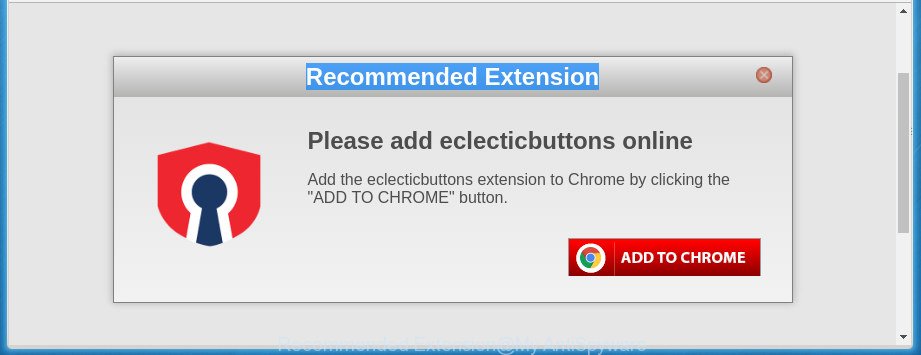
“Recommended Extension” offers to install an questionable browser add-on
The “Recommended Extension” adware is not a virus, but the virus behaves similarly. As a rootkit hides in the system, alters web browser settings and blocks them from changing. Moreover, the ad-supported software may install a browser hijacker that once started, will alter the internet browser’s homepage and search engine. And finally, the “Recommended Extension” software can collect a wide variety of personal information such as what pages you are opening, what you are looking for the Web and so on. This information, in the future, may be transferred to third parties.
The “Recommended Extension” adware often modify all web browser shortcuts that located on your Desktop to force you visit various unwanted ad web-sites. As a result, your browser can still reroute you to an intrusive ad web-page despite your PC is actually free of ad-supported software and other malicious software.
The guidance below explaining steps to remove Recommended Extension popups problem. Feel free to use it for removal of the adware that may attack Mozilla Firefox, Chrome, IE and Edge and other popular internet browsers. The instructions will allow you remove ‘ad supported’ software and thereby clean your web browser from all unwanted “Recommended Extension” pop ups.
Remove “Recommended Extension”
As with deleting ad-supported software, malicious software or PUPs, there are few steps you can do. We recommend trying them all. If you do only one part of the “Recommended Extension” removal guide, then it should be use malicious software removal utility, because it should get rid of adware and stop any further infection. But to completely remove Recommended Extension pop-ups you will have to at least reset your internet browser settings like home page, new tab and default search engine to default state, disinfect computer’s internet browsers shortcuts, remove all unwanted and suspicious applications, and delete ad supported software with malware removal utilities. Certain of the steps below will require you to exit the web site. So, please read the guide carefully, after that bookmark or print it for later reference.
Manual Recommended Extension redirect removal
The useful removal guide for the Recommended Extension pop-ups. The detailed procedure can be followed by anyone as it really does take you step-by-step. If you follow this process to delete Recommended Extension redirect let us know how you managed by sending us your comments please.
Uninstall ‘ad supported’ software through the Windows Control Panel
First method for manual adware removal is to go into the Microsoft Windows “Control Panel”, then “Uninstall a program” console. Take a look at the list of applications on your computer and see if there are any suspicious and unknown programs. If you see any, you need to uninstall them. Of course, before doing so, you can do an Web search to find details on the program. If it is a potentially unwanted program, ‘ad supported’ software or malicious software, you will likely find information that says so.
Windows 8, 8.1, 10
First, click Windows button

After the ‘Control Panel’ opens, click the ‘Uninstall a program’ link under Programs category as shown in the following example.

You will see the ‘Uninstall a program’ panel like below.

Very carefully look around the entire list of applications installed on your PC. Most likely, one or more of them are responsible for the appearance of pop-up and internet browser redirect to the unwanted Recommended Extension web-page. If you have many programs installed, you can help simplify the search of malicious software by sort the list by date of installation. Once you have found a suspicious, unwanted or unused program, right click to it, after that click ‘Uninstall’.
Windows XP, Vista, 7
First, press ‘Start’ button and select ‘Control Panel’ at right panel like below.

After the Windows ‘Control Panel’ opens, you need to click ‘Uninstall a program’ under ‘Programs’ as shown below.

You will see a list of applications installed on your system. We recommend to sort the list by date of installation to quickly find the software that were installed last. Most likely they responsibility for the appearance of pop-ups and web-browser redirect. If you are in doubt, you can always check the program by doing a search for her name in Google, Yahoo or Bing. Once the program which you need to delete is found, simply press on its name, and then click ‘Uninstall’ as shown in the following example.

Remove Recommended Extension pop-ups from Chrome
If your Google Chrome internet browser is re-directed to undesired Recommended Extension web-page, it may be necessary to completely reset your internet browser program to its default settings.
Open the Google Chrome menu by clicking on the button in the form of three horizontal stripes (![]() ). It will open the drop-down menu. Next, press to “Settings” option.
). It will open the drop-down menu. Next, press to “Settings” option.

Scroll down to the bottom of the page and click on the “Show advanced settings” link. Now scroll down until the Reset settings section is visible, like below and click the “Reset settings” button.
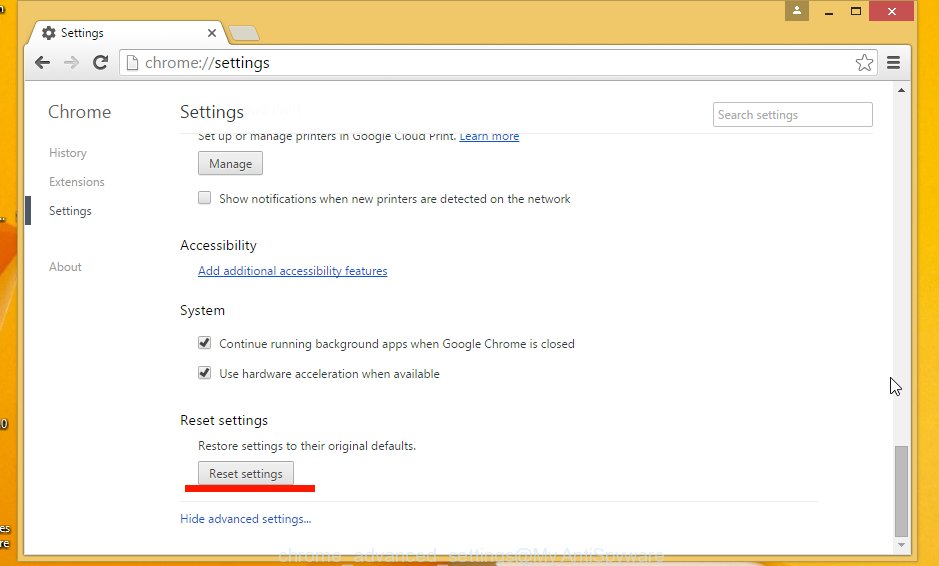
Confirm your action, press the “Reset” button.
Remove Recommended Extension pop-ups from Microsoft Internet Explorer
In order to recover all browser start page, newtab page and default search engine you need to reset the Internet Explorer to the state, that was when the Microsoft Windows was installed on your personal computer.
First, launch the Microsoft Internet Explorer, press ![]() ) button. Next, click “Internet Options” as shown in the following example.
) button. Next, click “Internet Options” as shown in the following example.

In the “Internet Options” screen select the Advanced tab. Next, click Reset button. The IE will display the Reset Internet Explorer settings dialog box. Select the “Delete personal settings” check box and click Reset button.

You will now need to reboot your computer for the changes to take effect. It will get rid of adware that causes a ton of intrusive Recommended Extension pop-up, disable malicious and ad-supported web-browser’s extensions and restore the IE’s settings such as homepage, newtab and search provider by default to default state.
Remove Recommended Extension from Mozilla Firefox by resetting browser settings
If the Firefox web browser program is hijacked, then resetting its settings can help. The Reset feature is available on all modern version of Mozilla Firefox. A reset can fix many issues by restoring Firefox settings such as startpage, newtab page and default search engine to its default state. It will save your personal information like saved passwords, bookmarks, and open tabs.
Start the Firefox and press the menu button (it looks like three stacked lines) at the top right of the web-browser screen. Next, click the question-mark icon at the bottom of the drop-down menu. It will display the slide-out menu.
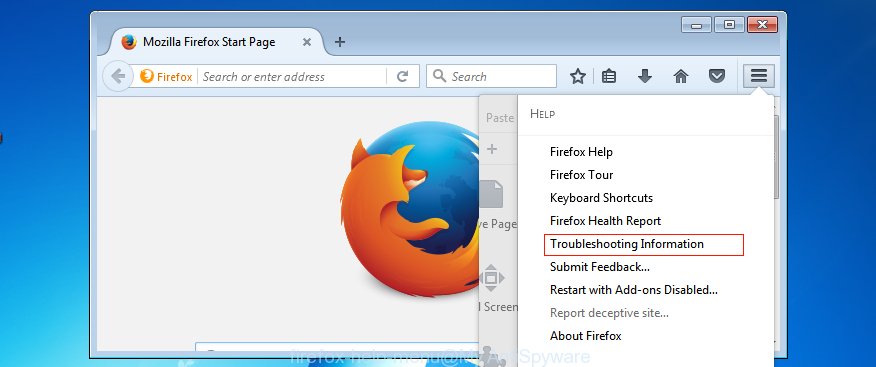
Select the “Troubleshooting information”. If you’re unable to access the Help menu, then type “about:support” in your address bar and press Enter. It bring up the “Troubleshooting Information” page as shown on the image below.
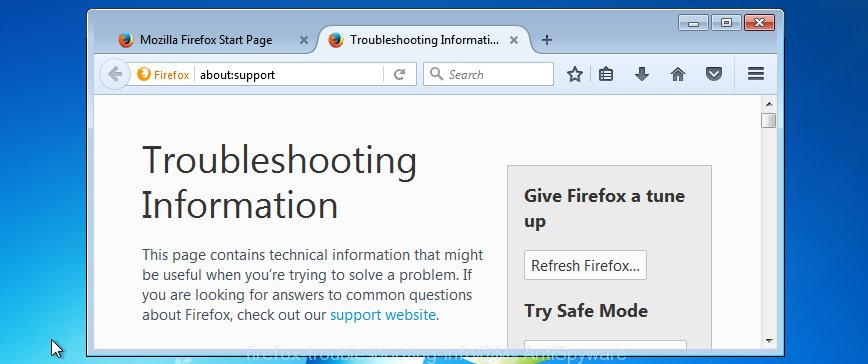
Click the “Refresh Firefox” button at the top right of the Troubleshooting Information page. Select “Refresh Firefox” in the confirmation prompt. The FF will begin a procedure to fix your problems that caused by the adware which causes unwanted Recommended Extension popup. When, it’s finished, click the “Finish” button.
Fix infected web browsers shortcuts to remove Recommended Extension redirect
After the adware is started, it can also modify the web-browser’s shortcuts, adding an argument like “http://site.address” into the Target field. Due to this, every time you launch the internet browser, it will display an annoying web-site.
Right click on the shortcut of infected web browser as displayed in the following example.
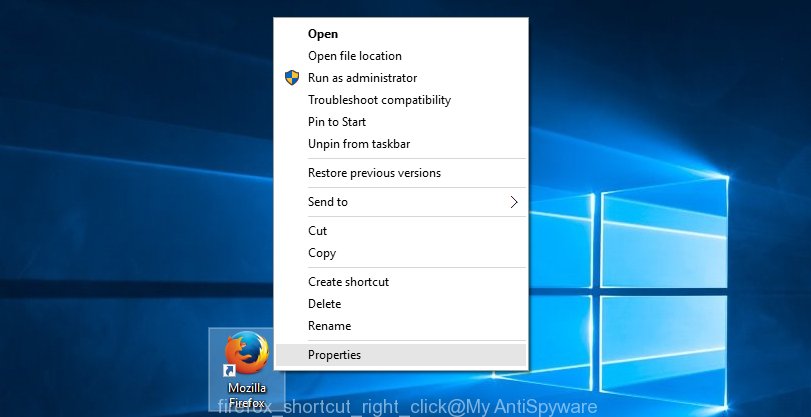
Select the “Properties” option and it’ll display a shortcut’s properties. Next, click the “Shortcut” tab and then delete the “http://site.address” string from Target field as shown in the following example.
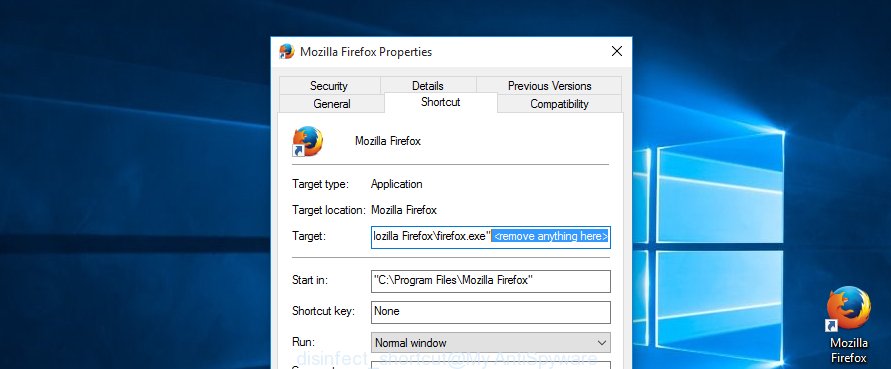
Then click OK to save changes. Repeat the step for all browsers which are rerouted to the Recommended Extension unwanted web-site.
Get rid of unwanted Scheduled Tasks
Once installed, the adware can add a task in to the Windows Task Scheduler Library. Due to this, every time when you start your personal computer, it will open Recommended Extension unwanted site. So, you need to check the Task Scheduler Library and remove all harmful tasks which have been created by adware.
Press Windows and R keys on the keyboard together. This shows a dialog box that called Run. In the text field, type “taskschd.msc” (without the quotes) and click OK. Task Scheduler window opens. In the left-hand side, click “Task Scheduler Library”, like below.
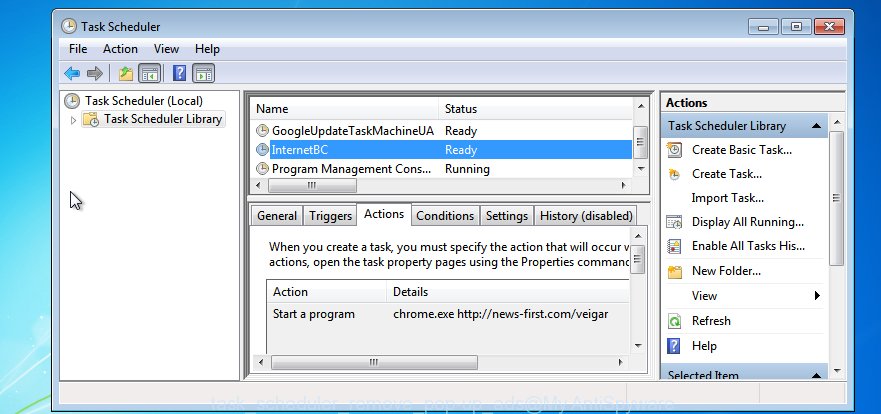
Task scheduler
In the middle part you will see a list of installed tasks. Please select the first task, its properties will be open just below automatically. Next, click the Actions tab. Pay attention to that it launches on your machine. Found something like “explorer.exe http://site.address” or “chrome.exe http://site.address”, then delete this harmful task. If you are not sure that executes the task, check it through a search engine. If it’s a component of the ‘ad-supported’ programs, then this task also should be removed.
Having defined the task that you want to get rid of, then click on it with the right mouse button and choose Delete as shown below.

Delete a task
Repeat this step, if you have found a few tasks which have been created by adware. Once is done, close the Task Scheduler window.
Recommended Extension pop-ups automatic removal
The easiest way to remove Recommended Extension redirect is to run an anti malware program capable of detecting this ad-supported software that redirects your internet browser to intrusive Recommended Extension web-page. We advise try Zemana Anti-malware or another free malicious software remover that listed below. It has excellent detection rate when it comes to ‘ad supported’ software, browser hijacker infections and other PUPs.
How to automatically remove Recommended Extension redirect with Zemana Anti-malware
We recommend you to use the Zemana Anti-malware which are completely clean your PC system of Recommended Extension pop ups. Moreover, the tool will help you to get rid of potentially unwanted programs, malware, toolbars and hijacker infections that your PC system may be infected too.
Download Zemana Free from the following link.
164790 downloads
Author: Zemana Ltd
Category: Security tools
Update: July 16, 2019
After the download is finished, close all software and windows on your computer. Open a directory in which you saved it. Double-click on the icon that’s called Zemana.AntiMalware.Setup as shown below.
![]()
When the install begins, you will see the “Setup wizard” that will help you set up Zemana Anti Malware (ZAM) on your machine.

Once setup is done, you will see window as on the image below.

Now press the “Scan” button . Zemana utility will begin scanning the whole PC to find out adware that causes a lot of intrusive Recommended Extension pop-ups. This task may take quite a while, so please be patient. While the Zemana Anti Malware application is scanning, you can see number of objects it has identified as threat.

Once that process is finished, Zemana will open a list of found threats. You may move threats to Quarantine (all selected by default) by simply click “Next” button.

The Zemana will remove adware that made to reroute your web-browser to various ad web-pages like Recommended Extension and add threats to the Quarantine.
Get rid of Recommended Extension pop-up with Malwarebytes
Manual Recommended Extension pop up removal requires some computer skills. Some files and registry entries that created by the ‘ad supported’ software can be not completely removed. We suggest that run the Malwarebytes Free that are completely free your machine of ad supported software. Moreover, the free application will help you to remove malicious software, potentially unwanted software, hijackers and toolbars that your PC can be infected too.
Download MalwareBytes Anti-Malware (MBAM) from the following link and save it directly to your Microsoft Windows Desktop.
327048 downloads
Author: Malwarebytes
Category: Security tools
Update: April 15, 2020
Once the downloading process is finished, close all programs and windows on your PC. Double-click the set up file named mb3-setup. If the “User Account Control” dialog box pops up as shown on the screen below, click the “Yes” button.

It will open the “Setup wizard” that will help you install MalwareBytes on your computer. Follow the prompts and do not make any changes to default settings.

Once installation is complete successfully, click Finish button. MalwareBytes AntiMalware (MBAM) will automatically start and you can see its main screen as displayed on the screen below.
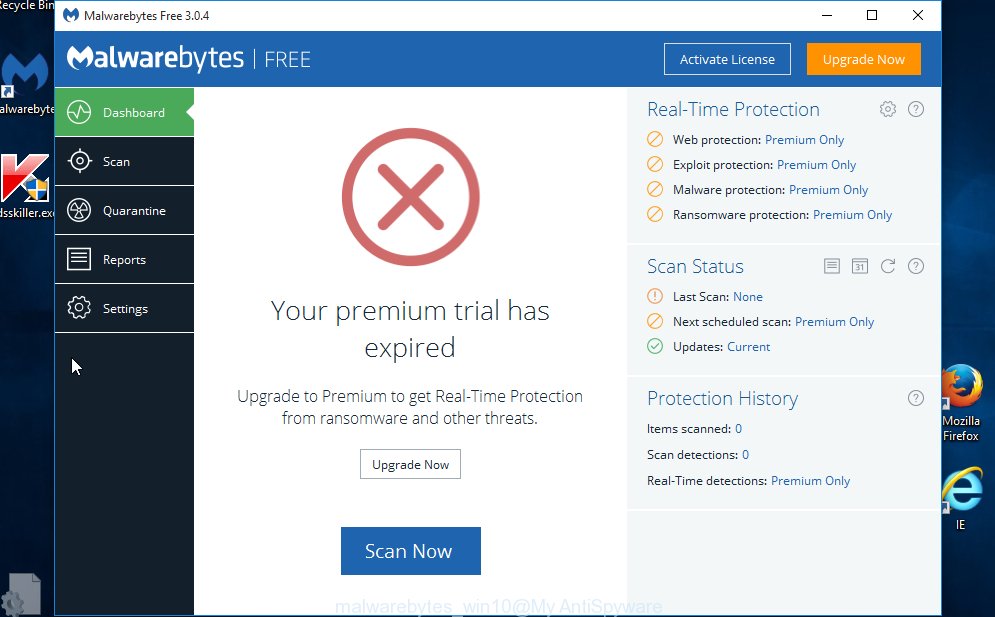
Now press the “Scan Now” button .MalwareBytes Anti Malware (MBAM) application will scan through the whole PC for the adware that causes tons of annoying Recommended Extension pop-up. Depending on your PC system, the scan may take anywhere from a few minutes to close to an hour. While the MalwareBytes AntiMalware (MBAM) program is checking, you can see count of objects it has identified as threat.
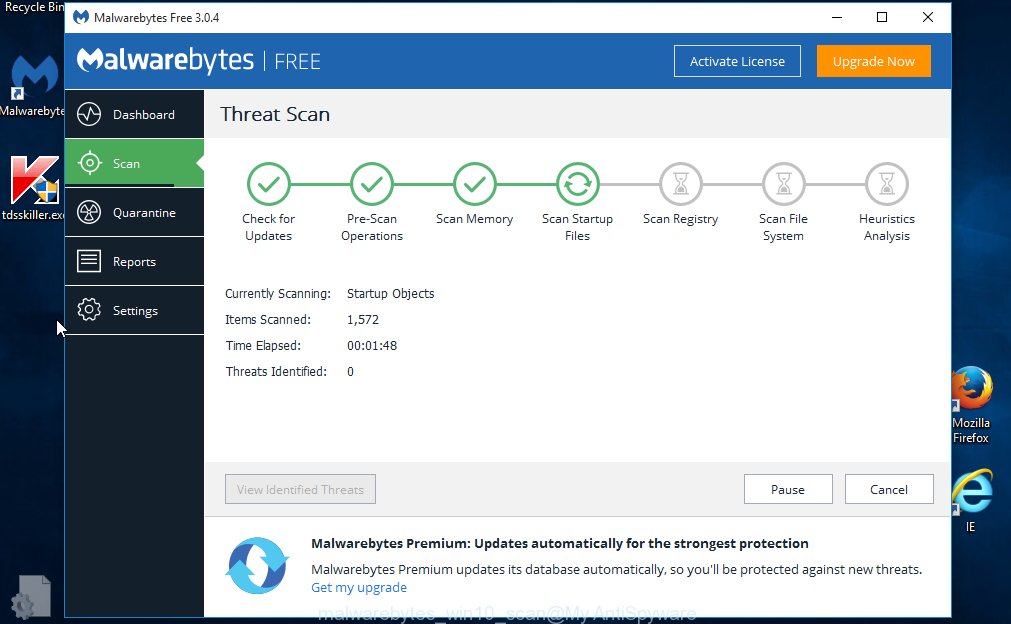
After finished, MalwareBytes Free will show a list of found threats. Next, you need to press “Quarantine Selected” button. The MalwareBytes will start to delete ad supported software that cause annoying Recommended Extension popups to appear. Once the clean up is finished, you may be prompted to restart the PC.
We recommend you look at the following video, which completely explains the procedure of using the MalwareBytes Anti-Malware (MBAM) to remove adware, browser hijacker infection and other malware.
If the problem with Recommended Extension redirect is still remained
AdwCleaner is a free portable program that scans your personal computer for adware that causes multiple annoying ads and pop-ups, PUPs and browser hijacker infections and allows delete them easily. Moreover, it’ll also allow you remove any malicious browser extensions and add-ons.
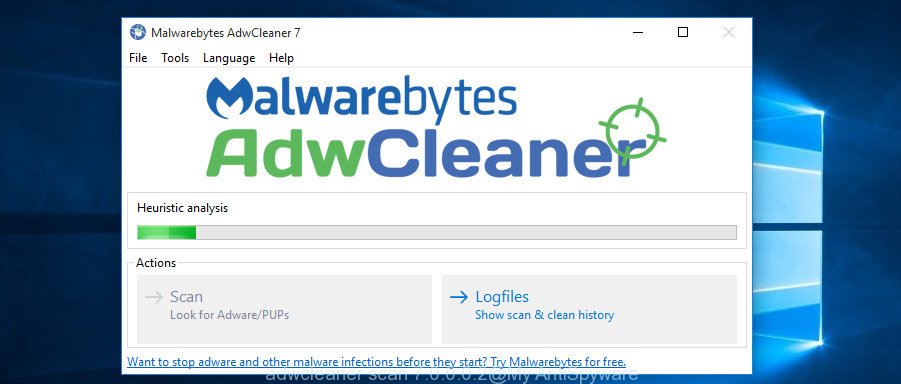
- Download AdwCleaner on your Microsoft Windows Desktop by clicking on the link below.
AdwCleaner download
225536 downloads
Version: 8.4.1
Author: Xplode, MalwareBytes
Category: Security tools
Update: October 5, 2024
- Select the directory in which you saved it as Desktop, and then press Save.
- When the downloading process is done, run the AdwCleaner, double-click the adwcleaner_xxx.exe file.
- If the “User Account Control” prompts, press Yes to continue.
- Read the “Terms of use”, and click Accept.
- In the AdwCleaner window, click the “Scan” .AdwCleaner program will scan through the whole computer for the adware that developed to reroute your internet browser to various ad web sites like Recommended Extension. Depending on your personal computer, the scan can take anywhere from a few minutes to close to an hour. When a malicious software, ad supported software or PUPs are found, the number of the security threats will change accordingly.
- Once AdwCleaner has completed scanning your personal computer, AdwCleaner will display a list of all items detected by the scan. All found items will be marked. You can remove them all by simply click “Clean”. If the AdwCleaner will ask you to reboot your personal computer, click “OK”.
The instructions shown in detail in the following video.
Run AdBlocker to block Recommended Extension pop-ups
By installing an ad blocking application like AdGuard, you are able to stop Recommended Extension popups, autoplaying video ads and remove lots of distracting and intrusive ads on web sites.
Installing the AdGuard ad-blocker application is simple. First you will need to download AdGuard by clicking on the following link. Save it on your MS Windows desktop.
26840 downloads
Version: 6.4
Author: © Adguard
Category: Security tools
Update: November 15, 2018
After downloading is done, double-click the downloaded file to run it. The “Setup Wizard” window will show up on the computer screen as displayed below.

Follow the prompts. AdGuard will then be installed and an icon will be placed on your desktop. A window will show up asking you to confirm that you want to see a quick tutorial as shown in the following example.

Click “Skip” button to close the window and use the default settings, or press “Get Started” to see an quick guidance that will allow you get to know AdGuard better.
Each time, when you start your PC system, AdGuard will start automatically and block unwanted ads, Recommended Extension pop-ups, as well as other harmful or misleading web-pages. For an overview of all the features of the program, or to change its settings you can simply double-click on the AdGuard icon, that is located on your desktop.
How does your personal computer get infected with Recommended Extension popups
The adware spreads with a simple but quite effective way. It is integrated into the installer of various free applications. Thus on the process of installation, it will be installed onto your personal computer. In order to avoid adware, you just need to follow a few simple rules: carefully read the Terms of Use and the license, select only a Manual, Custom or Advanced installation mode, which enables you to make sure that the program you want to install, thereby protect your PC from the ‘ad supported’ software that causes a huge number of intrusive Recommended Extension pop up.
Finish words
After completing the step by step guidance shown above, your computer should be clean from ad supported software that causes multiple undesired “Recommended Extension” popups and other malicious software. The Google Chrome, IE, Mozilla Firefox and Edge will no longer redirect you to various undesired web sites such as “Recommended Extension”. Unfortunately, if the tutorial does not help you, then you have caught a new adware, and then the best way – ask for help in our Spyware/Malware removal forum.



















